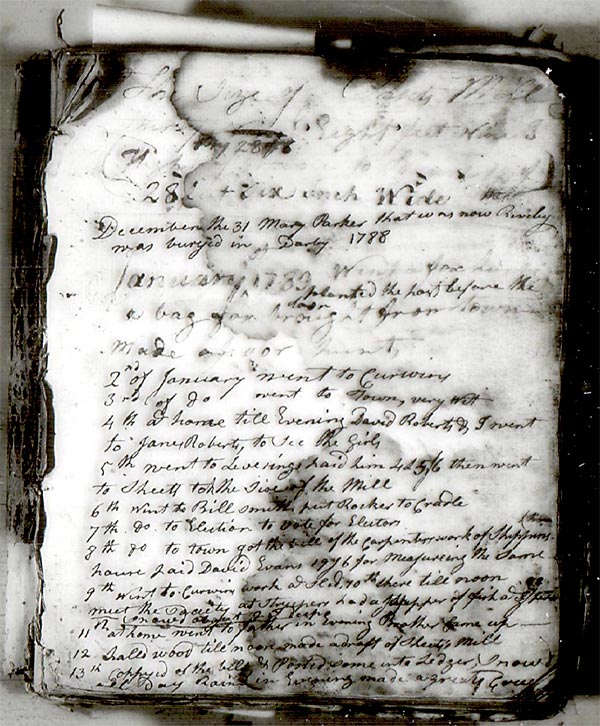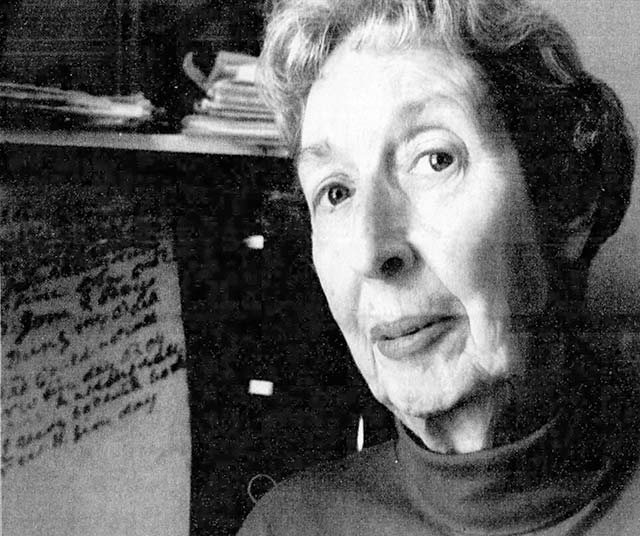The Joseph Price Diary
Joseph Price (1753–1828) was the fourth generation of that Quaker family to live in Lower Merion. He was one of the Township’s important citizens…a Renaissance man. A plaque outside the house he built in 1803 at 714 Montgomery Avenue, Narberth (near Meetinghouse Lane) attests: “Quaker Farmer, Innkeeper, Undertaker, Militiaman, Diarist, Saw Mill Operator, Milestone Installer, Carpenter, Turnpike Supervisor, Patriot, Concerned Citizen.”
The Diary Year by Year
- 1788-89
- 1790
- 1791
- 1792
- 1793
- 1794
- 1795
- 1796
- 1797
- 1798
- 1799
- 1800
- 1801
- 1802
- 1803
- 1804
- 1805
- 1806
- 1807
- 1808
- 1809
- 1810
- 1816
- 1817
- 1818
- 1819
- 1820
- 1824
- 1825
- 1826
- 1827
- 1828
Explore diary entries organized by selected topics.

Price began his diary when he was 35 and the last entry was made three days before his death at age 75. His daily entries were made on odd scraps of paper (over 3,000) [see Sample] that he carried around with him, loosely fastened together with string. This extraordinary 40-year document offers a treasure trove of details of Lower Merion life in that era and a testament to the varied skills and interests of an extraordinary ordinary man.
Grateful acknowledgement is made to Mary Keim (1916–2016), who spent three years painstakingly transcribing Price’s diary. The convoluted script, the phonetic spelling and archaic phrasing was a test of her tenacity and skills.
Joseph Price starts every day with a weather report…where the wind was, whether it was cold, hot, wet or dry. He only mentions the thermometer once in 40 years so he apparently had no access to one. It was quiet. It was dark. He mentioned the Northern Lights many times; how they would wait after evenings meetings until the moon came up.
He was a builder and a carpenter…a good reason for operating a saw mill. And as a coffin maker, he attended to the burials (often at Merion Friends Cemetery).
Price was an active citizen, held a number of not-so-important posts in Lower Merion, and was trusted by his neighbors. He helped them with wills and helped to resolve disputes.
We find out a lot about money, food, recreation and the position of married women (all property belonged to the husbands). There were detailed reports on weddings, daily work, education, crime and punishment and various social problems.
Health and mortality fascinated him. He reported treatment methods: bleeding, plasters, laxatives. Alcoholism was something that carried many men off. There were many arguments at harvest time and a lot of drinking (and fights). He talks about many suicides and, surprisingly, depression.
During this project I became so close to Price and his world that, at the end, I felt I lost a personal friend.

Reading the diary
Diary entries for the years 1811–1815 and 1821–1823 are not available. Joseph Price either suspended his diary during these years, or the documents have not survived.
Spelling in the diary is varied as was customary at the time. Spelling modernizations and notes made by the transcriber are indicated by italic letters, surrounded by brackets.
The start of a new page (“odd scraps of paper”) is indicated by a horizontal line above the entry.
More on Joseph Price
-
Joseph Price’s World, from a 1997 lecture by Mary Keim; an accessible and engaging overview of Price’s life, times and writings.
-
Joseph Price in The First 300, also written by Mary Keim (2000)
-
Forty Years of Quaker Life by David Schmidt (c.2001)
-
Cultivating Piety: The Religious World of Joseph Price by John Fea; originally appeared in Pennsylvania Heritage magazine, Volume XXXVII, Number 3 (Summer 2011)
-
Joseph Price and His Diary, 1788-1810 by Charles R. Barker, Bulletin of the Historical Society of Montgomery County, Vol. 1, Number 2, April, 1937, page 55. Barker may be credited with the re-discovery of the diary; this essay was its introduction to the public.
-
Joseph Price Papers at the Historical Society of Pennsylvania
